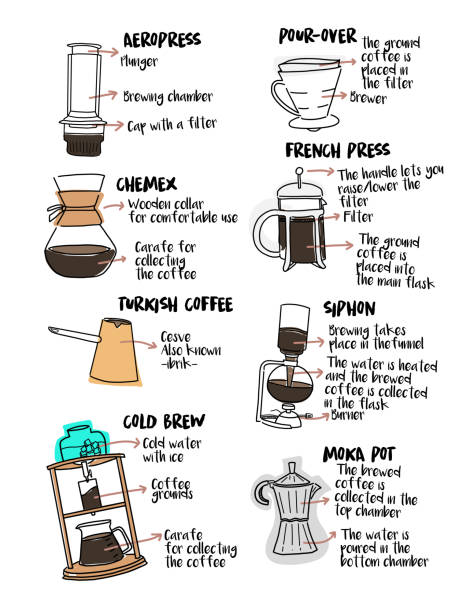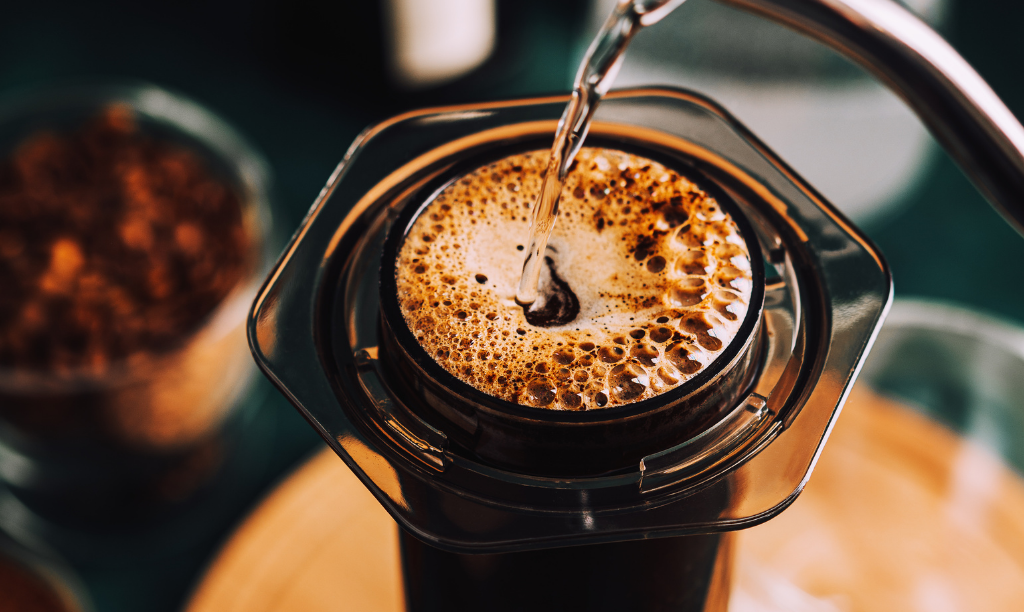Revealing the Science Behind Various Coffee Brewing Methods and Their Benefits
Revealing the Science Behind Various Coffee Brewing Methods and Their Benefits
Blog Article
Discovering the Art of Coffee Brewing: A Comprehensive Overview to Improving Your Cup
The art of coffee brewing is a complex discipline that merges scientific research with individual expression, where the selection of beans, water top quality, and brewing techniques assemble to produce a polished sensory experience. Comprehending the subtleties of numerous coffee beans, especially the distinctions in between Arabica and Robusta, is vital for any type of fanatic. The choice of ideal tools and precise focus to developing specifications can dramatically affect the final result. As we check out these aspects, one must think about exactly how even minor changes can cause extensive modifications in flavor and aroma-- what might these adjustments expose regarding your optimal cup?
Understanding Coffee Beans
To genuinely appreciate the art of coffee brewing, one have to first understand the fundamental aspect: coffee beans. These small seeds, generally originated from the Coffea plant, are vital in determining the taste account, aroma, and overall high quality of the made drink. Coffee beans mostly fall into 2 classifications: Arabica and Robusta. Arabica beans, known for their fragile tastes and higher acidity, are usually favored by connoisseurs. On the other hand, Robusta beans possess a more powerful, more bitter preference and greater high levels of caffeine material, making them appropriate for espresso blends.

In addition, the processing method-- whether cleaned, all-natural, or honey-- affects the beans' final taste. Understanding these aspects enables brewers to select the ideal beans that align with their chosen flavor profile, inevitably enhancing the coffee developing experience. coffee brewing methods. This understanding is important for any person aspiring to understand the craft of brewing the ideal mug of coffee
Developing Techniques Clarified
Several lovers locate that the selection of developing method dramatically impacts the final flavor and fragrance of their coffee. Each technique harnesses various removal techniques, influencing the coffee's personality and splendor.
Drip brewing, one of the most preferred methods, utilizes a device to trickle hot water via ground coffee, producing a constant and clean cup. French press, on the other hand, immerses coffee premises in warm water, enabling a fuller body and even more robust taste, as oils and great bits continue to be in the brew.
Pour-over brewing provides a thorough strategy, where water is manually poured over coffee grounds, permitting for accurate control over removal time and temperature, leading to a bright and nuanced cup.
Espresso, a focused coffee made under stress, is understood for its strong flavor and luscious structure, functioning as the base for numerous coffee drinks, including lattes and coffees.
Essential Tools Required
What tools is crucial for brewing a fantastic mug of coffee? The foundation of any effective coffee developing procedure depends on top quality equipment tailored to your favored approach. To start with, a trustworthy coffee mill is essential; newly ground beans considerably enhance flavor and fragrance. Opt for a burr mill, which makes sure consistent bit dimension, necessary for ideal extraction.
Following, consider your developing device. Options vary from drip coffee manufacturers and pour-over arrangements to French presses and coffee devices. Each technique provides distinctive taste accounts and brewing strategies, so pick one that aligns with your preference choices.
An exact range is also very useful, enabling you to gauge coffee and water accurately, which is crucial for uniformity. Additionally, a thermostat can assist keep track of water click here for more info temperature, as it straight affects extraction high quality.
Mastering Water Quality
The quality of water utilized in developing coffee plays a substantial duty in establishing the last flavor profile of the cup. Various factors add to water high quality, consisting of mineral material, pH level, and overall pureness. Ideally, water must be devoid of pollutants and contaminants, as these can detrimentally impact the taste of coffee.
Minerals, such as calcium and magnesium, improve the removal of tastes from the coffee grounds, while maintaining a balanced pH level-- around 6.5 to 7.5-- is vital for ideal extraction. Water that is as well soft may result in under-extraction, causing weak or sour flavors, while extremely hard water can generate a bitter or harsh cup.
For the ideal outcomes, filtered water is advised, as it minimizes the presence of chlorine and other undesirable compounds frequently discovered in tap water. read review Additionally, consider using water with an Overall Dissolved Solids (TDS) level in between 150-200 ppm, which is typically perfect for coffee brewing. By understanding water top quality, you can lay a solid structure for accomplishing a constantly superb mug of coffee, permitting the special features of your selected beans to shine through.

Tips for Flavor Enhancement
Enhancing the taste of your coffee can substantially elevate your developing experience and draw out the one-of-a-kind nuances of your selected beans. To achieve this, take into consideration numerous essential variables that affect taste.
First of all, the work dimension plays a critical role. A finer grind increases removal, leading to bolder tastes, while a coarser work yields a milder cup. coffee brewing methods. Change your work read this according to your brewing technique to attain optimal results
Secondly, experiment with mixture time. Over-extraction can lead to resentment, while under-extraction results in a sour preference. Objective for a mixture time that balances these extremes, generally between two to four mins, relying on your approach.
Furthermore, temperature level is a vital element. Brewing with water that is too hot can burn the coffee, while water that is as well amazing might stop working to extract sufficient flavor. The optimal temperature level variety is 195 ° F to 205 ° F(90 ° C to 96 ° C)
Final Thought) )))) To conclude, the art of coffee brewing is a diverse practice that requires a deep understanding of numerous components, including bean choice, developing approaches, and water top quality. Proficiency of vital equipment and focus to detail in grind size, brew time, and temperature level are important for attaining optimal removal. By integrating these parts, coffee lovers can raise their developing strategies, leading to a mug that not just pleases individual preferences yet likewise showcases the abundant complexity of coffee flavors.
The art of coffee brewing is a complex discipline that combines science with individual expression, where the choice of beans, water high quality, and brewing techniques converge to develop a refined sensory experience.To really appreciate the art of coffee developing, one should first understand the fundamental element: coffee beans. Developing with water that is also warm can scorch the coffee, while water that is too amazing might stop working to extract appropriate flavor. In conclusion, the art of coffee brewing is a complex technique that calls for a deep understanding of numerous aspects, consisting of bean option, brewing techniques, and water high quality. By incorporating these components, coffee enthusiasts can elevate their developing methods, resulting in a mug that not only satisfies individual choices however additionally showcases the abundant complexity of coffee flavors.
Report this page